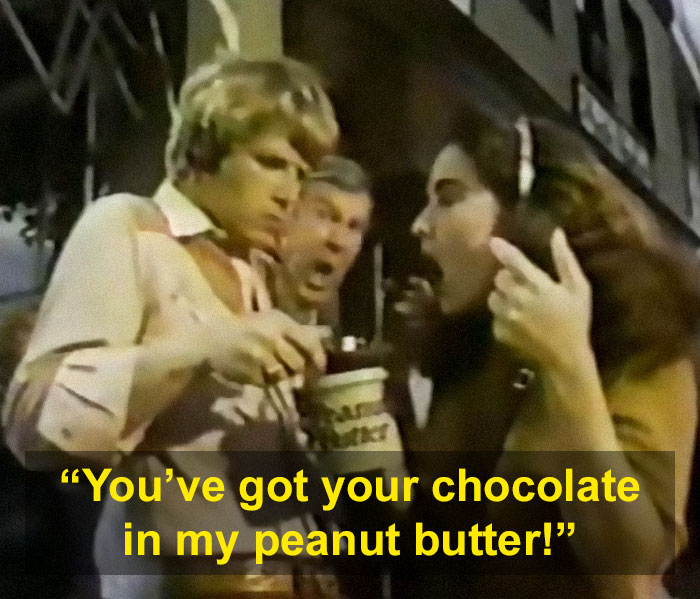In most pursuits, we worry about going too fast. But we often overlook the risk of going too slow.
Think about learning to ride a bike…If you pedal too slowly, you lose balance and fall over. Your ride actually becomes more safe at a higher speed.
If you take things too slow, you risk:
- Frustration.
- Getting outpaced by the competition.
- Losing opportunities to iterate and adjust.
In today’s fast-paced environment, speed is more important than perfection.
As Mario Andretti said: “if you feel totally in control, you’re probably not going fast enough”.
Check out this week’s video for more.
The Reese’s Peanut Butter Cup Technique: A Recipe for Innovation.

“You’ve got your peanut butter in my chocolate! No, you got your chocolate in my peanut butter!” Two distinct ingredients combined to create something remarkable.
Innovations often originate from combining two discrete ideas: SUVs are a mix of cars and trucks, R&B fuses Rhythm & Blues, and a Lay-z-boy is the combo of a bed and a chair.
Fusing two unrelated elements is the essence of the Reese’s Peanut Butter Cup innovation technique:
- Start by listing a wide array of possible “ingredients” for your challenge.
- Mix unrelated elements—like a touch-screen kiosk or a Broadway musical—to spark unorthodox solutions.
- The more unexpected, the better. For example, try pulling out a dictionary and flipping to a random word as an ingredient. The results may surprise you or spark new, better ideas.
Try this creative synthesis with your team this week. Combining distinct ideas can lead to innovative (and delicious) results.
What can speed do for your business?

Imagine displaying a huge digital billboard in New York’s Citi Field, only to have it broken on live TV in front of a national audience.
LA Dodgers pitcher Shohei Ohtani steps up and nearly hits a home run, but the ball goes foul and smashes into a Coors Light billboard, breaking the sign and turning a panel black.
Do you complain or capitalize on the moment? If you’re Coors Light, you do the latter.
Within 48 hours of the incident, Coors Light launches limited edition cans featuring the “missing” piece hit by Ohtani. These $17 cans (without beer) sold out before shipping even started. This quick thinking turned a mishap into a marketing triumph, attaching Coors Light to Ohtani’s fame and creating a viral sensation.
Often, the best antidotes to a setback are speed and creativity.
It can’t be done. Or can it?
“All truth passes through three stages: ridiculed, violently opposed, accepted as self-evident.” – Arthur Schopenhauer.
Unfortunately, most of us get stuck in the first stage.
Remember when it seemed impossible for a computer to respond appropriately to conversational human interactions? That was until OpenAI’s ChatGPT was unleashed on the world. What was once unimaginable became reality, self-evident, and now seems commonplace.
Many innovations we take for granted—telephones, cars, airplanes—were once dismissed as impossible. Breakthroughs in AI, healthcare, and technology happened because visionaries refused to accept the notion that something that seemed impossible was actually impossible.
The next time you hear the phrase “it can’t be done,” you’re probably on the verge of a breakthrough.
To your creative success…

PS: Want to share this issue of Find A Way? Just copy and paste the link or forward the email version. Did someone share this with you? Subscribe here to get your own copy delivered straight to your inbox every Monday.
About Josh
Josh Linkner is a New York Times bestselling author, serial entrepreneur, venture capital investor, professional jazz guitarist, and a globally recognized innovation expert. To learn more or to explore a collaboration, visit JoshLinkner.com
